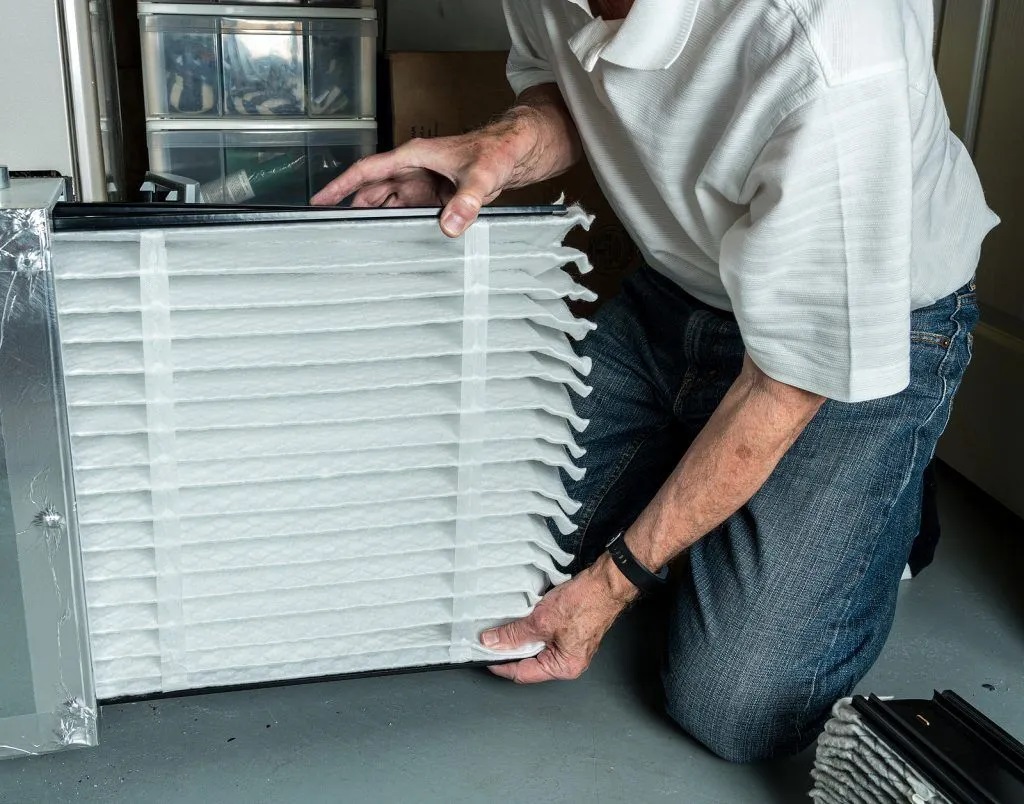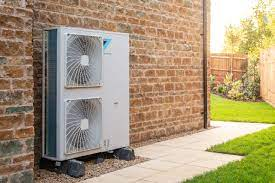Should I Leave the Furnace Fan On All Winter? As winter’s icy grip tightens its hold, the eternal dilemma of should fan be on auto or on in winter arises. Picture this: you’re cozily ensconced in your home, the thermostat radiating warmth, and your trusty furnace kicks in. But there’s a pivotal choice to make: should the fan be on when the heat is on, or should it dance to the rhythm of ‘auto’?
In this chilly conundrum, understanding the thermostat fan on or auto in winter perplexity becomes paramount. Join us as we unveil the secrets of whether you should embrace the perpetual breeze by running furnace fan continuously in winter or if there’s a more prudent path to heating nirvana. It’s time to delve into the heart of this winter-warmer quandary.
Should Fan Be on Auto or on in Winter
In general, it is recommended to set your furnace fan to AUTO in the winter. This is because the AUTO setting is more energy-efficient than the ON setting.
When your fan is set to AUTO, it will only run when your furnace is heating your home. This means that your fan is not running all the time, which can save you money on your energy bills.
The ON setting, on the other hand, keeps your fan running all the time, even when your furnace is not heating your home. This can waste energy and increase your energy bills.
There are a few potential benefits to setting your fan to ON in the winter:
- It can help to circulate the warm air throughout your home more evenly.
- It can help to remove dust and other allergens from the air.
- It can help to reduce noise from your furnace.

Why Would I Want to Keep the Fan On?
Here are some of the main benefits of leaving your furnace fan running continuously throughout the winter:
– It circulates air and prevents hot and cold spots. Keeping the fan on helps push warm air from the furnace into different areas of your home, helping balance out temperatures. This can help prevent uncomfortable cold spots in certain rooms.
– It improves air quality. Running the fan continuously keeps air circulating, which can reduce dust, pet dander, cooking odors, and other air pollutants that build up indoors. Stagnant air can allow these particles to accumulate.
– It adds humidity. As the fan circulates air over your furnace’s humidifier, it helps add moisture to the dry indoor air during winter. This can make your home feel warmer.
– It evens out furnace cycles. Leaving the fan on means your furnace doesn’t have to turn on and off as frequently to heat your home. This puts less wear and tear on the furnace.
– It provides better filtration. If your furnace filter is located after the fan, leaving it on more often will filter particles out of the air more frequently.
What Are the Downsides?
However, there are also some drawbacks to consider:
– It uses more energy. Running your fan 24/7 will increase your electricity use, as it’s powered by electric motors. This can add a significant amount to your utility bills each month.
– It can spread pollutants. While continuous fan use helps filter out some pollutants, it can also spread others around your home rather than trap them in the return ducts.
– It can add noise. The constant drone of the fan motor can get annoying in bedrooms or other quiet areas.
– It can cause dry air. Evaporative humidifiers depend on cycles of air movement to work effectively. Constant fan movement can over-dry indoor air.
– It may distribute odors. Any cooking, pet, or other smells may circulate more throughout your home rather than being contained in certain rooms.
– It can shorten furnace life. While it evens out cycles, continuous fan use still adds more hours of wear and tear over time. It can shorten the lifespan of the motor and other parts.

Tips for Managing Continuous Furnace Fan Use
If you decide to keep your furnace fan running through the winter, here are some tips to get the benefits while reducing the downsides:
– Get a programmable thermostat. This allows you to set a schedule for when the fan runs – such as only during the daytime hours when you need maximum air circulation.
– Adjust the speed. Most fans have multi-speed motors. Running it at a slower setting can still circulate air while consuming less energy.
– Have your ductwork inspected. Make sure ducts are properly sealed so you don’t lose warm air circulation efficiency.
– Change filters frequently. This reduces strain on the fan motor.
– Have a professional do yearly maintenance. Check belts, motors, bearings, etc. to keep the system running efficiently.
– Use a humidifier. This adds moisture back to offset the drying effects of continuous fan circulation.
– Do periodic air quality checks. Test for particulates, CO2, and VOCs to ensure your IAQ is actually improving.
– Check your insulation. Better insulated homes stay evenly heated with less need for fan circulation.
– Close doors and vents. Isolate rooms like bedrooms so constant fan noise is reduced. Keep supply vents open in occupied rooms.
– Listen for abnormalities. Strange motor sounds may indicate a problem needing repair.
Alternatives to Consider
Rather than running the central furnace fan non-stop, you could consider:
– Getting a whole-home ventilation system. These are designed to circulate and filter air without using as much energy.
– Installing ceiling fans. These can provide air circulation room-by-room on demand.
– Letting the furnace run naturally. Most cycle on and off as needed for 15-20 minutes per hour without the fan on constant mode.
– Using the fan’s automatic setting. This cycles the fan on and off with the furnace as needed.
– Running the fan in cycles. Such as 10 minutes per hour or on low speed at night.
– Turning the fan on as needed. Such as for an hour in the morning and evening to clear out pollutants.
The Bottom Line
In conclusion, the decision of whether to leave the furnace fan on all winter is not a one-size-fits-all answer. Should fan be on auto or on in winter? It ultimately depends on your specific needs and preferences. If you’re aiming for improved air circulation and more consistent temperatures, running the fan continuously may be beneficial.
However, for those concerned about energy efficiency and lower utility bills, should the fan be on when the heat is on? Auto mode may be the way to go. By adjusting your thermostat’s settings to thermostat fan on or auto in winter, you can strike a balance between comfort and cost-effectiveness. Furnace blower motor hums but won’t start: Fix it right now! So, before making your final decision, consider your priorities and take the “should I run my furnace fan continuously in the winter” question into account. Make an informed choice that suits your home and lifestyle best, ensuring a cozy and efficient winter season.
FAQs
Here are answers to some frequently asked questions about leaving the furnace fan on all winter:
- How much extra will it cost to run my furnace fan continuously?
This depends on the efficiency of your furnace fan motor, size of your home, speed setting, and local energy costs. Most experts estimate it will add 5-15% onto your heating bill over the winter if running it 24/7.
- Should I turn the fan off at night?
It can be smart to turn it off or down to a lower speed at night when air circulation is less crucial. This reduces energy use at night and gives your furnace system a break.
- Will a continuous furnace fan help with dust?
Yes, it can help reduce dust by continuously filtering air through your furnace filter. Just be sure to change filters regularly so they don’t get clogged.
- Can I override my programmable thermostat to keep the fan on?
Most programmables have a setting to keep the fan continually on that overrides other schedules and programs. Check your user manual.
- How do I know if my fan or motor needs repairs?
Listen for odd noises like grinding, buzzing or squealing which could indicate a problem. Have an HVAC technician inspect it annually. They can test fan performance too.




